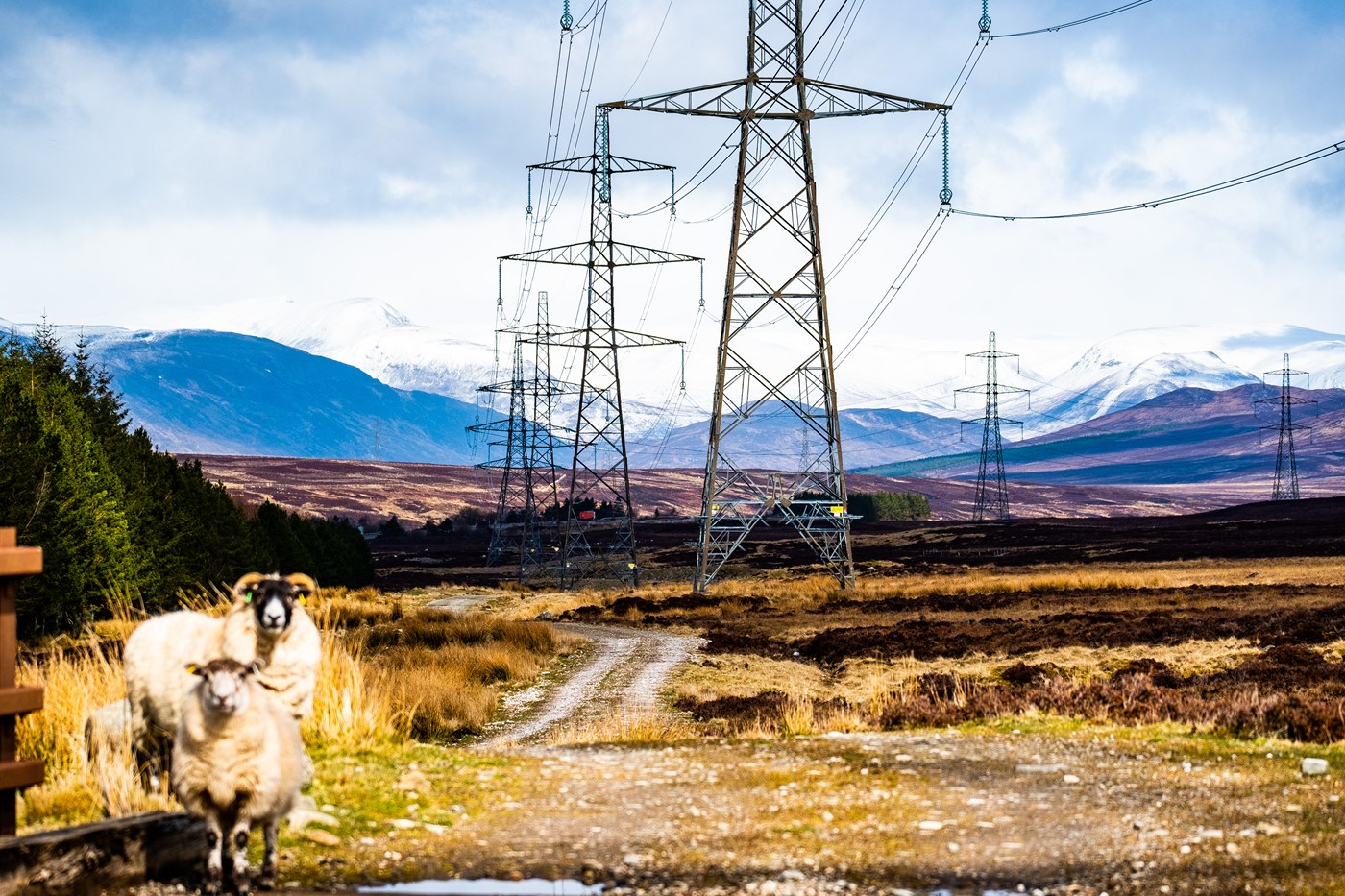New Dalchork Substation and overhead line between Lairg and Loch Buidhe complete
-
Project connects new renewable energy generation to the national grid, helping in the fight against climate change
-
Old 132kV transmission line and 36 towers between Lairgmuir and Inveran to be removed
A project to install a new electricity substation north of Lairg and overhead lines to connect it into Loch Buidhe Substation is complete, helping to support the connection of renewable electricity to the national grid and contribute to the fight against climate change.
SSEN Transmission along with contractors Balfour Beatty and Wood Group have been working on the project since 2019 to construct the new transmission infrastructure, which has been developed to facilitate the connection of new renewable energy generation in the area.
The project is made up of four main elements. Work included constructing a new 132kV substation at Dalchork, approximately 3km north of Lairg, along with replacing the existing cables on top of the existing pylons between Cassley and Lairg. Around 16km of 132kV overhead line was built from the new substation at Dalchork to the Loch Buidhe Substation, near Bonar Bridge. Now all new assets are in place and operational, the old 132kV overhead lines and 36 towers between Lairg Grid Supply point (GSP) substation and Shin Substation at Inveran will be decommissioned and removed to reduce the amount of electricity infrastructure in the area.
The new substation at Dalchork also incorporates the Creag Riabhach Windfarm overhead line connection, which was completed in 2022.
Careful consideration has been made to preserve the scenic area in which Dalchork substation is located, with the substation itself being built into the slope of the land so it is naturally screened by the landscape. The new substation has been designed with space available to accommodate any future renewable energy developments in the area, with the platform built to ensure that any additional equipment to be sited at Dalchork can be done so with minimal future works required.
Around 400,000 tonnes of bedrock at the site was crushed and reused to form the substation platform and permanent access road, limiting the amount of material which was required to be imported to site using HGVs, as well as removing the need for any materials to be taken offsite for disposal.
The area around the site has also been replanted with native tree species as well as seeded with local wildflowers which will not only help with visual impact but also encourage greater biodiversity in the area, allowing local flora and fauna to flourish, in line with SSEN Transmission’s commitment to deliver biodiversity net gain on its projects.
Extensive environmental work took place to ensure SSEN Transmission’s impact on the local wildlife, fauna and flora was kept to a minimum at all times during all phases of the project. Ecological surveys were carried out in advance of any work taking place, which allowed teams to identify what wildlife species were in the area and ensure full mitigation plans could be drawn up in advance to make sure they were always protected. This included having ecologists onsite during construction to check that any construction activities were not disturbing wildlife, as well as to provide ongoing monitoring of nesting bird species identified nearby, as well as rescheduling construction activities to avoid impacting on nesting birds.
Helicopters were used to fly in and deliver materials during the construction of the Creag Riabhach overhead line connection to reduce the amount of heavy machinery crossing sensitive peatland.
Wooden crates used to store components for the new overhead line were repurposed and turned into 54 nesting boxes for owls and kestrels installed across northern Scotland, with one box already creating a home for two healthy tawny owl chicks.
Andy McLaren, SSEN Transmission Lead Project Manager, said: “Completing the full package of work at Dalchork Substation and the overhead line between Lairg and Loch Buidhe is a huge achievement, with the teams working through some particularly challenging weather conditions, difficult terrain and the impacts of the covid pandemic in the early stages. It has been a fantastic team effort and I would like to thank the SSEN Transmission Project team and our contract partners Balfour Beatty and Wood Group for all their hard work and dedication in delivering the project safely and to the highest standard. As a project team we are proud of the role we are playing in delivering a network for net zero.
“From the very start it’s been really important to us that we take care of the surroundings in which we operate, with extensive environmental management plans in place form the beginning and an ecologist on site during critical stages of the main construction build. We also limited our import and export of materials as much as possible when creating the new Dalchork Substation, which not only cut down on our emissions from HGVs but ensured we reused as much rock and topsoil material from the site as we can.
“With the final removal stages of the old transmission line between Lairg and Shin substations now nearing completion, we would like to thank the communities and land owners along the route for their support and continued patience throughout the build, without which the project and its role in connecting new renewable energy in this area would not have been possible.”
Learn more about the project on SSEN Transmission’s website here: https://www.ssen-transmission.co.uk/projects/project-map/lairg---loch-buidhe/
